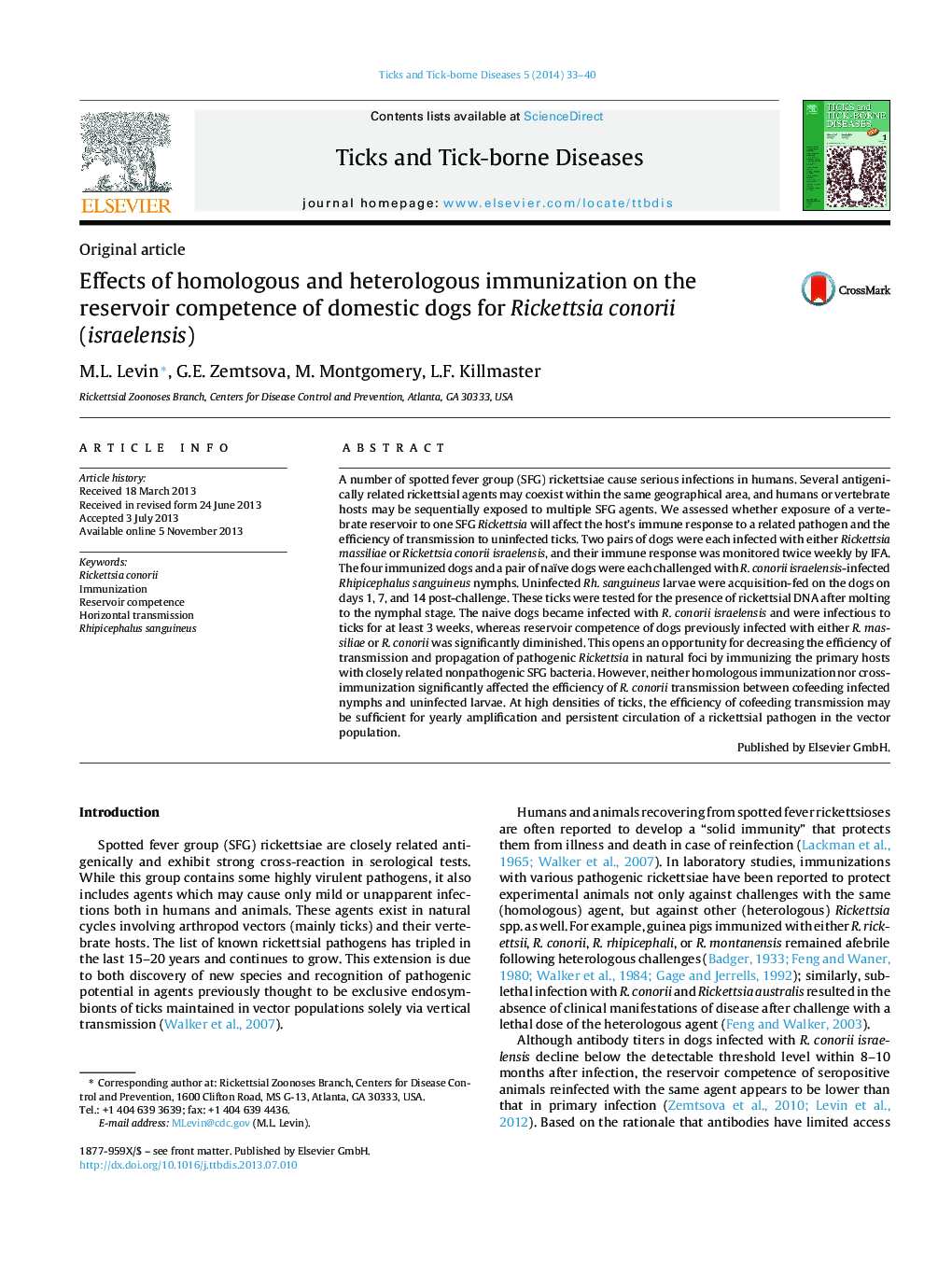| Article ID | Journal | Published Year | Pages | File Type |
|---|---|---|---|---|
| 2474119 | Ticks and Tick-borne Diseases | 2014 | 8 Pages |
A number of spotted fever group (SFG) rickettsiae cause serious infections in humans. Several antigenically related rickettsial agents may coexist within the same geographical area, and humans or vertebrate hosts may be sequentially exposed to multiple SFG agents. We assessed whether exposure of a vertebrate reservoir to one SFG Rickettsia will affect the host's immune response to a related pathogen and the efficiency of transmission to uninfected ticks. Two pairs of dogs were each infected with either Rickettsia massiliae or Rickettsia conorii israelensis, and their immune response was monitored twice weekly by IFA. The four immunized dogs and a pair of naïve dogs were each challenged with R. conorii israelensis-infected Rhipicephalus sanguineus nymphs. Uninfected Rh. sanguineus larvae were acquisition-fed on the dogs on days 1, 7, and 14 post-challenge. These ticks were tested for the presence of rickettsial DNA after molting to the nymphal stage. The naive dogs became infected with R. conorii israelensis and were infectious to ticks for at least 3 weeks, whereas reservoir competence of dogs previously infected with either R. massiliae or R. conorii was significantly diminished. This opens an opportunity for decreasing the efficiency of transmission and propagation of pathogenic Rickettsia in natural foci by immunizing the primary hosts with closely related nonpathogenic SFG bacteria. However, neither homologous immunization nor cross-immunization significantly affected the efficiency of R. conorii transmission between cofeeding infected nymphs and uninfected larvae. At high densities of ticks, the efficiency of cofeeding transmission may be sufficient for yearly amplification and persistent circulation of a rickettsial pathogen in the vector population.
